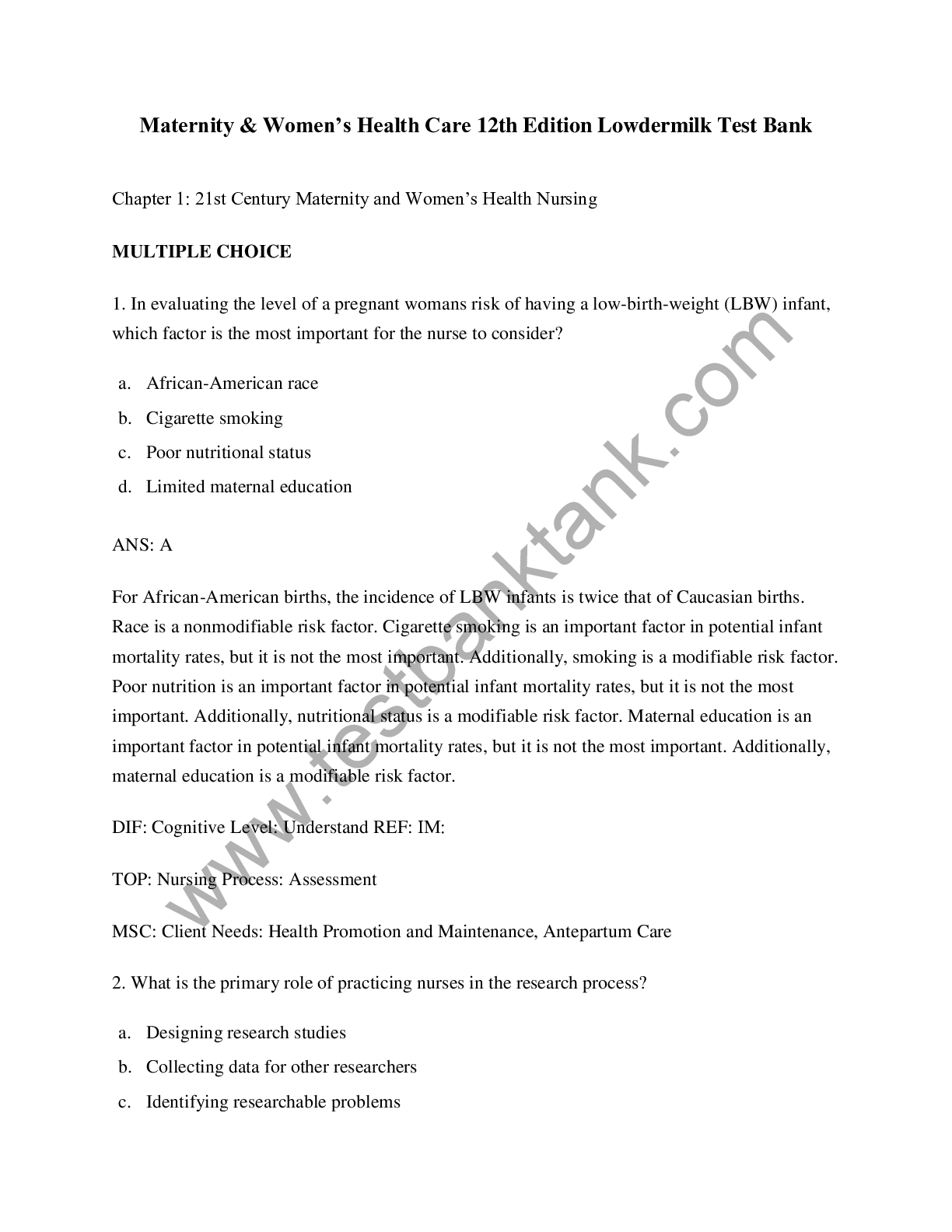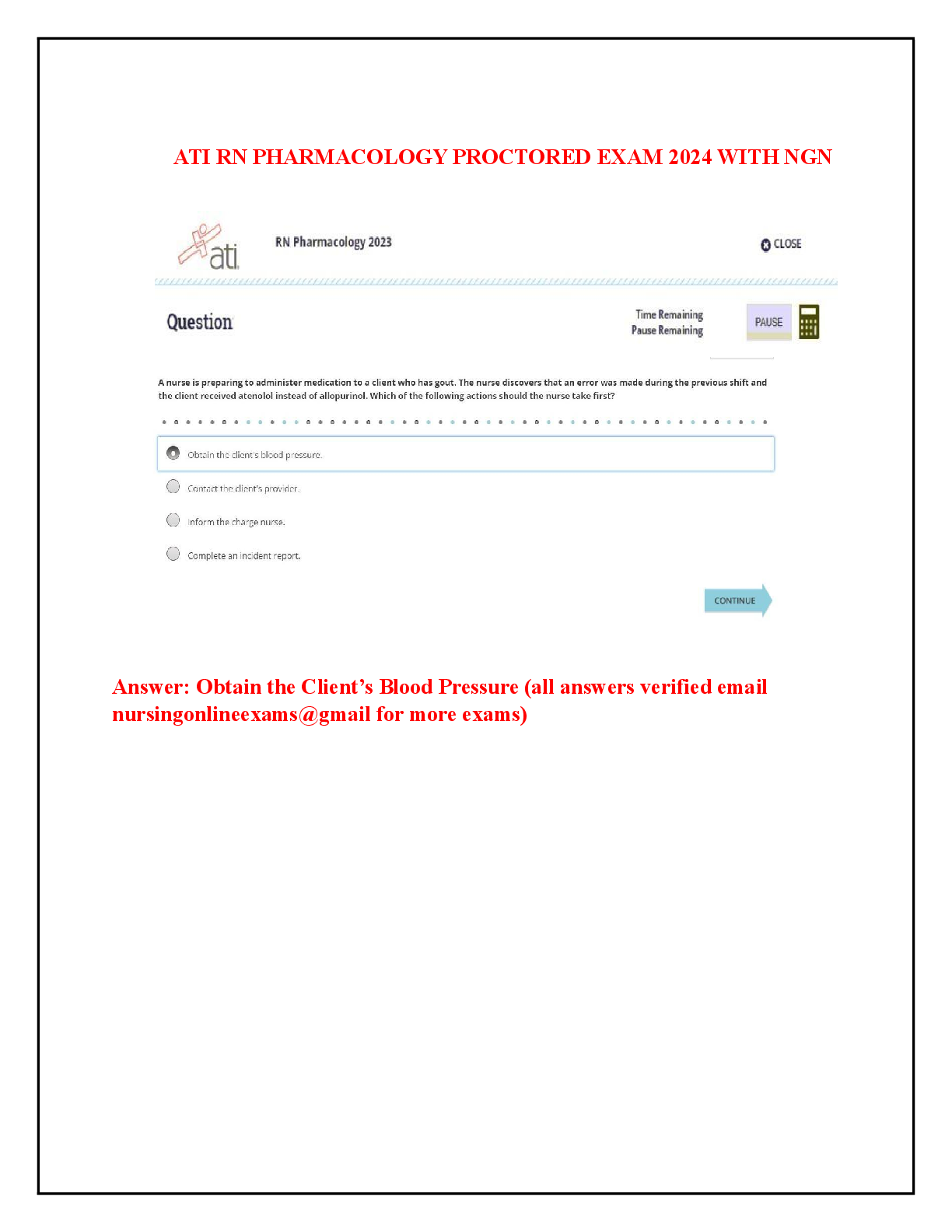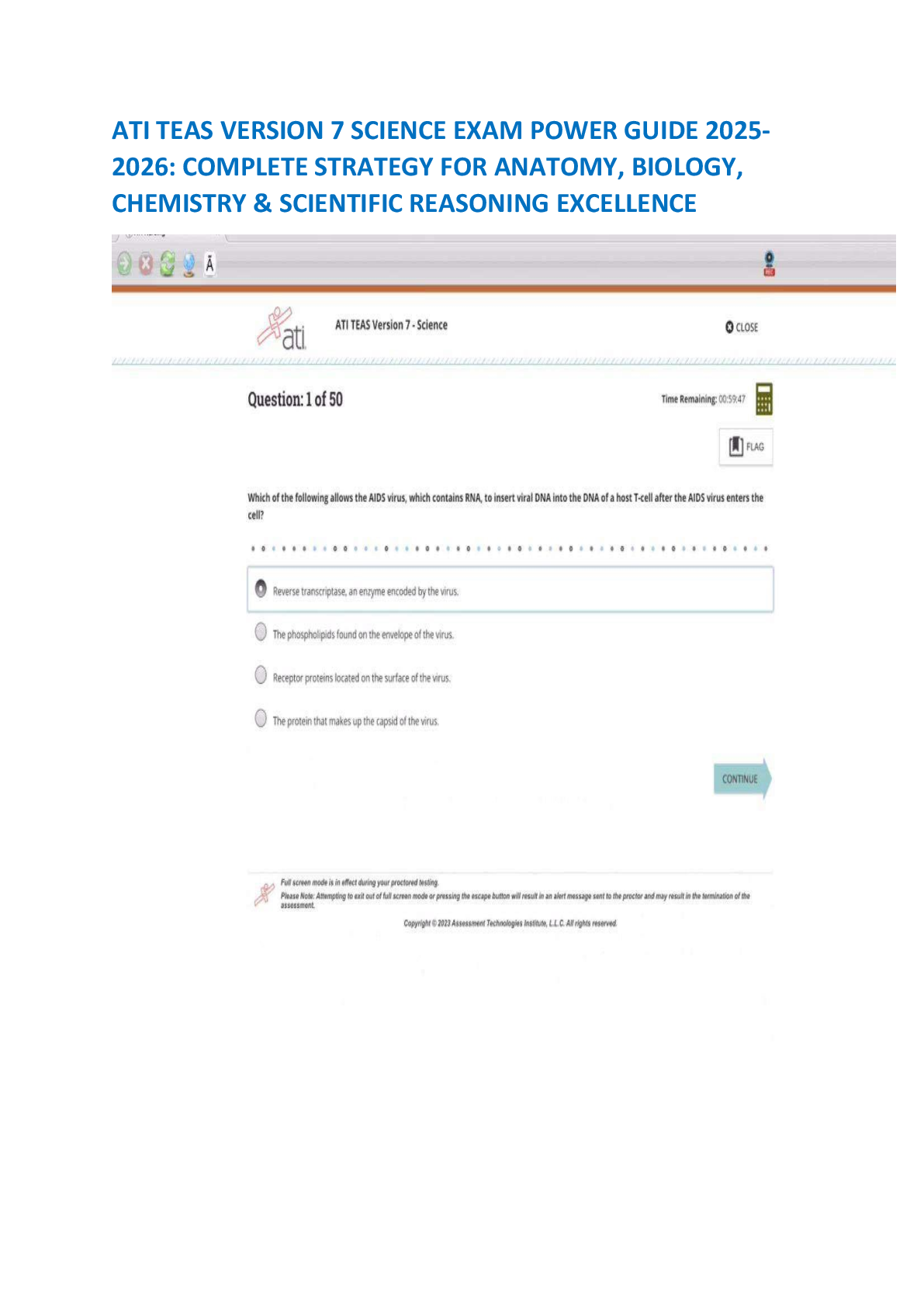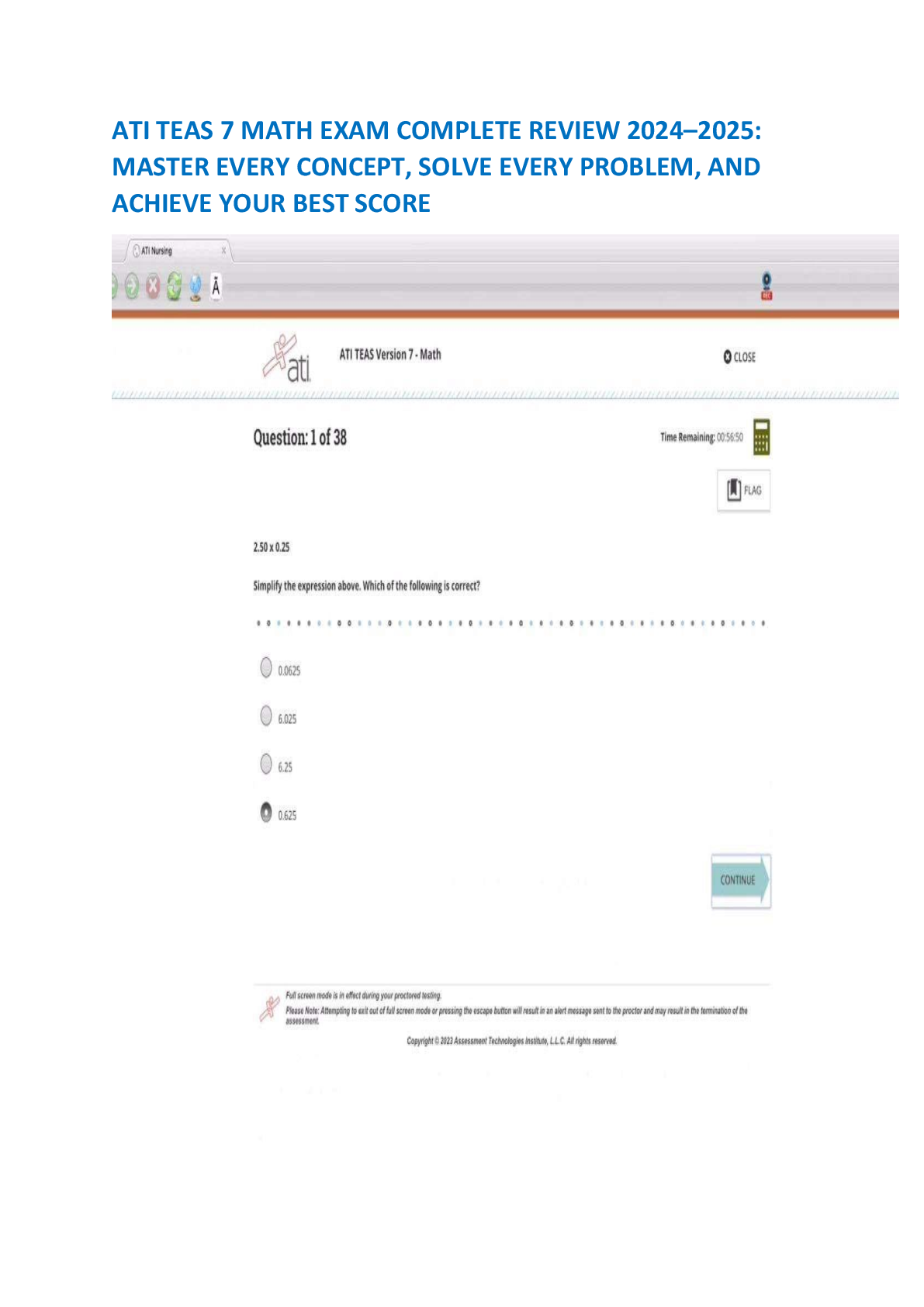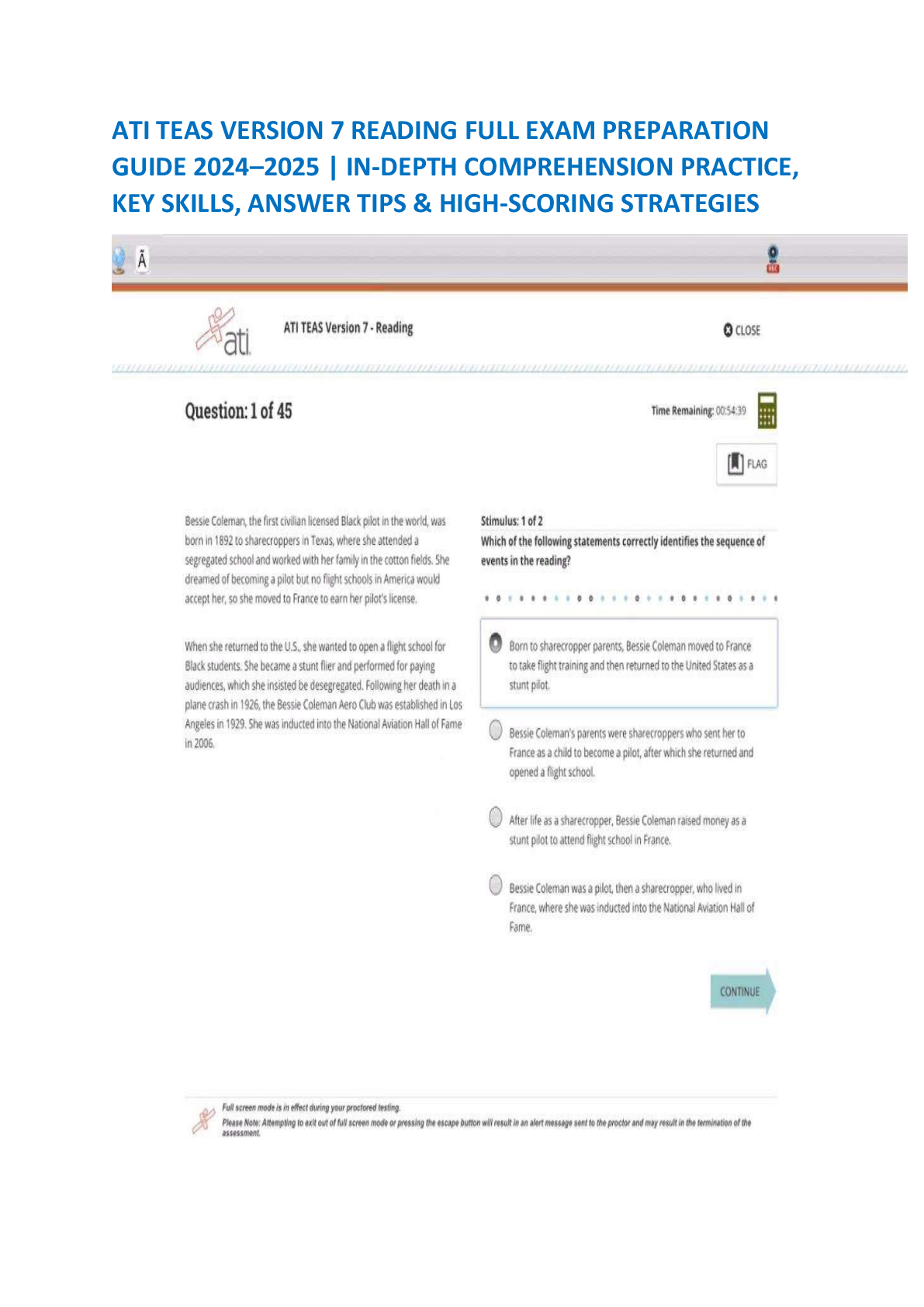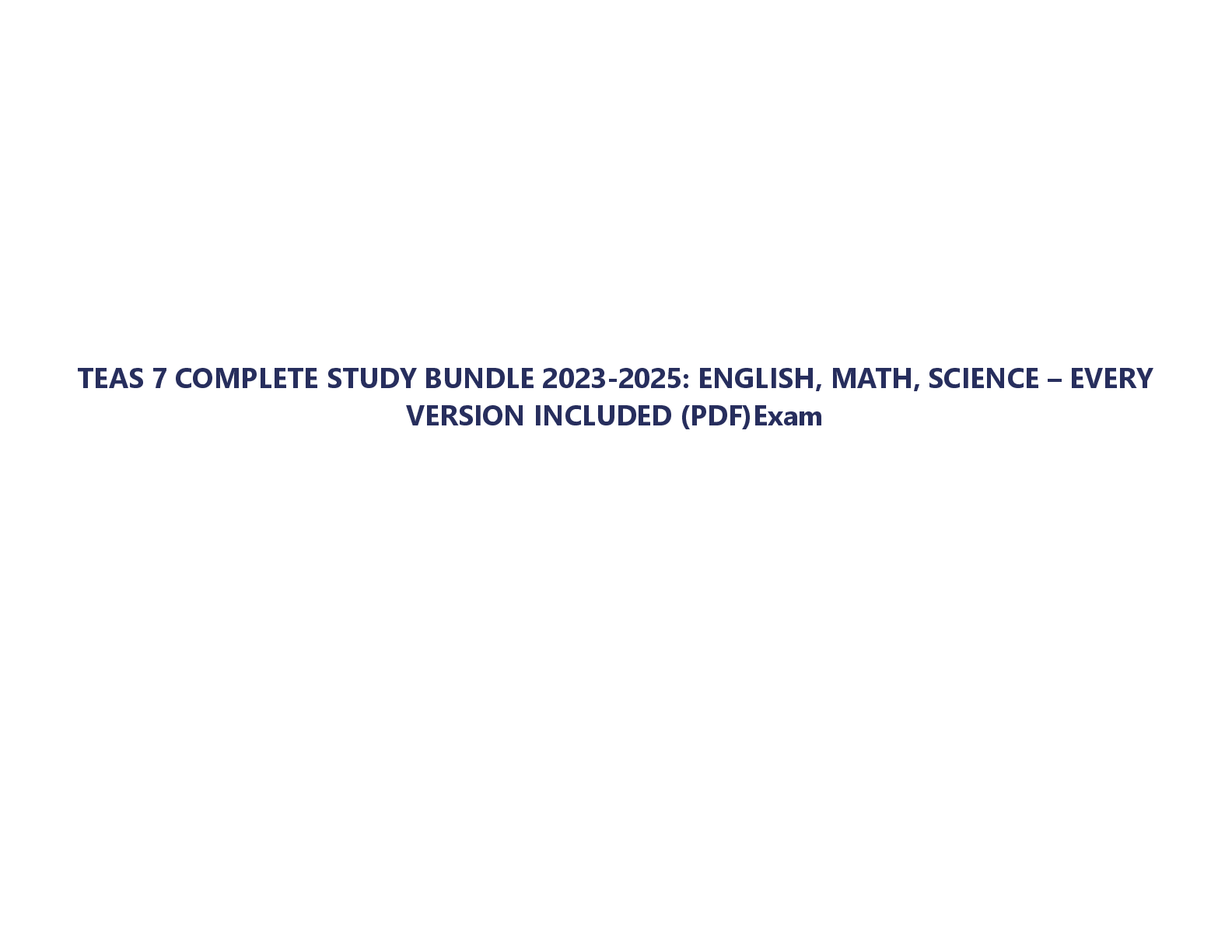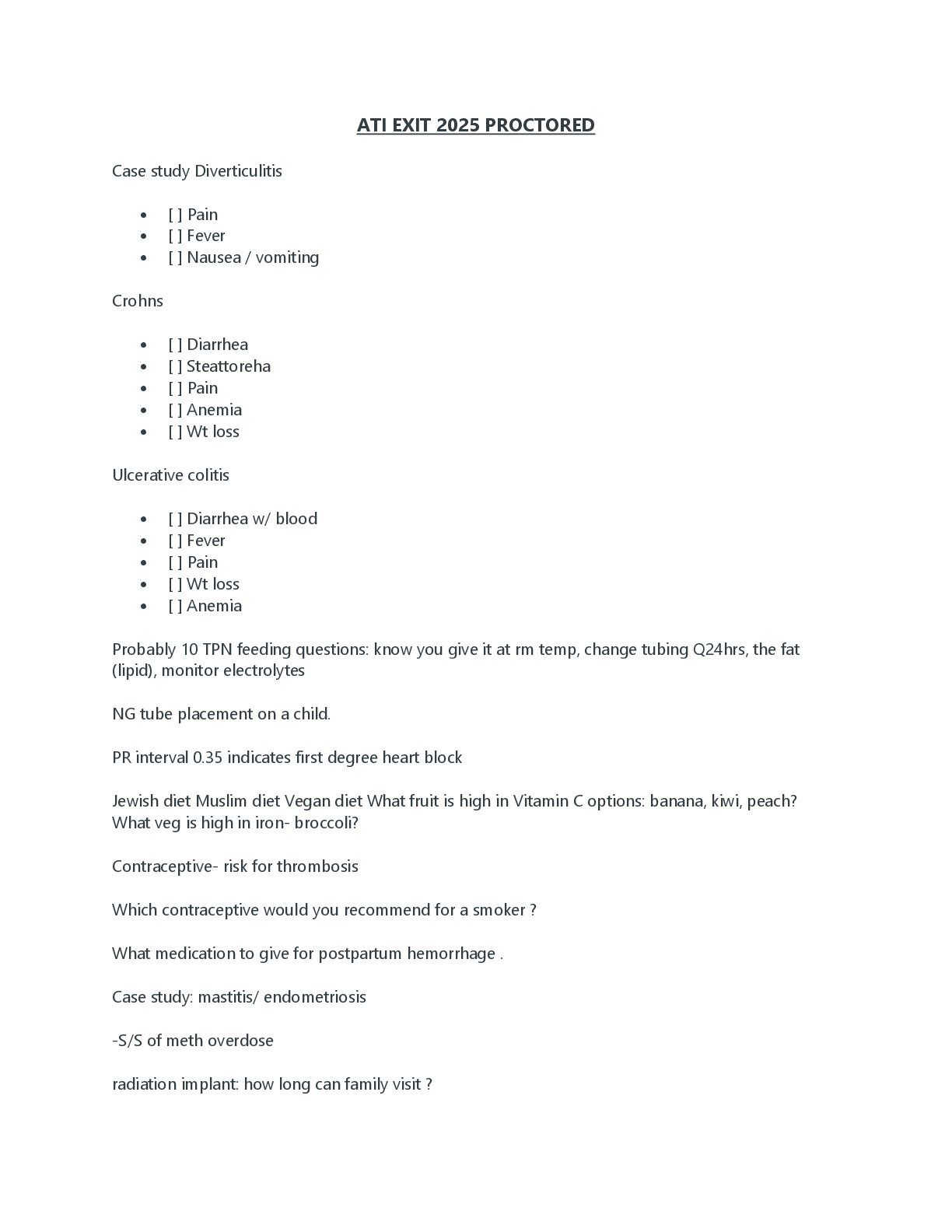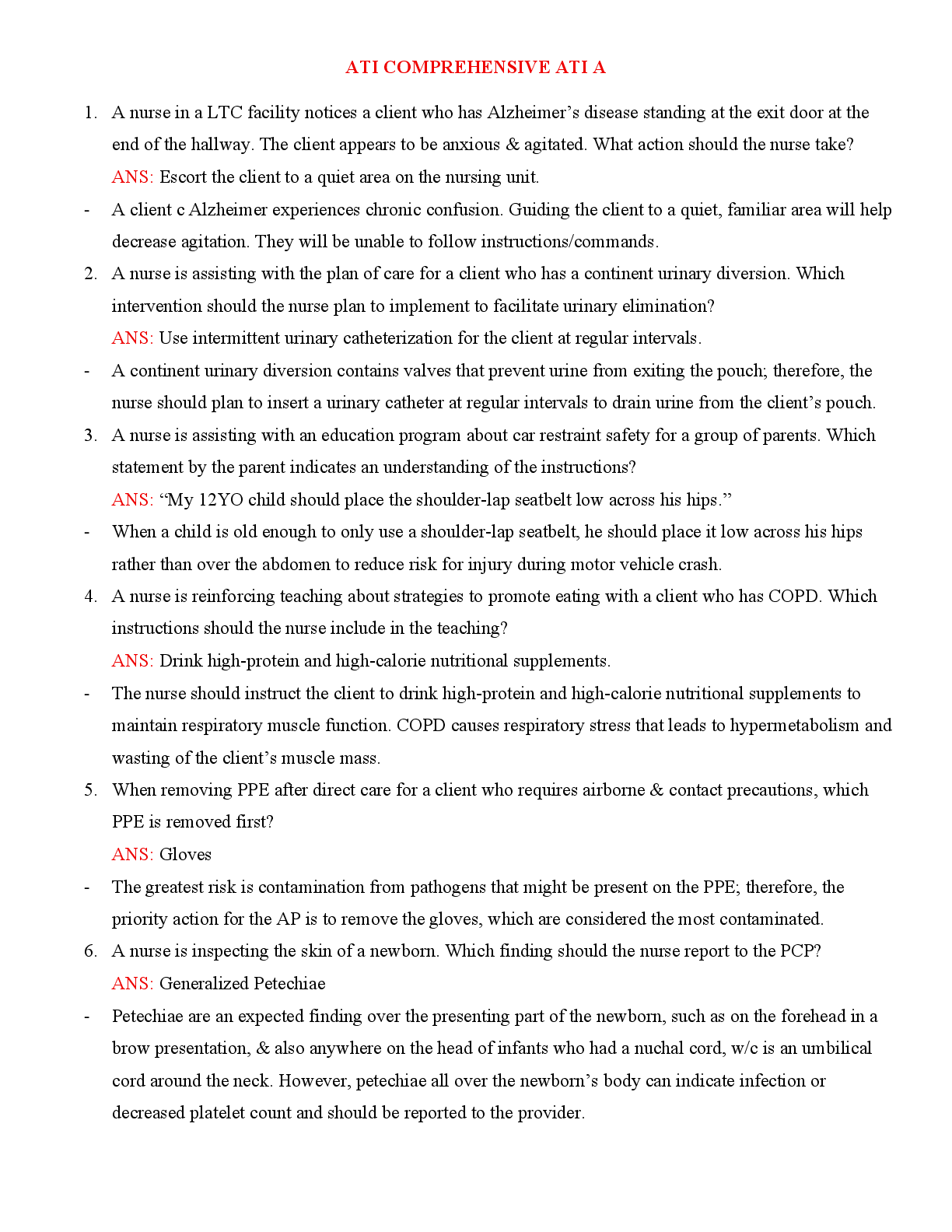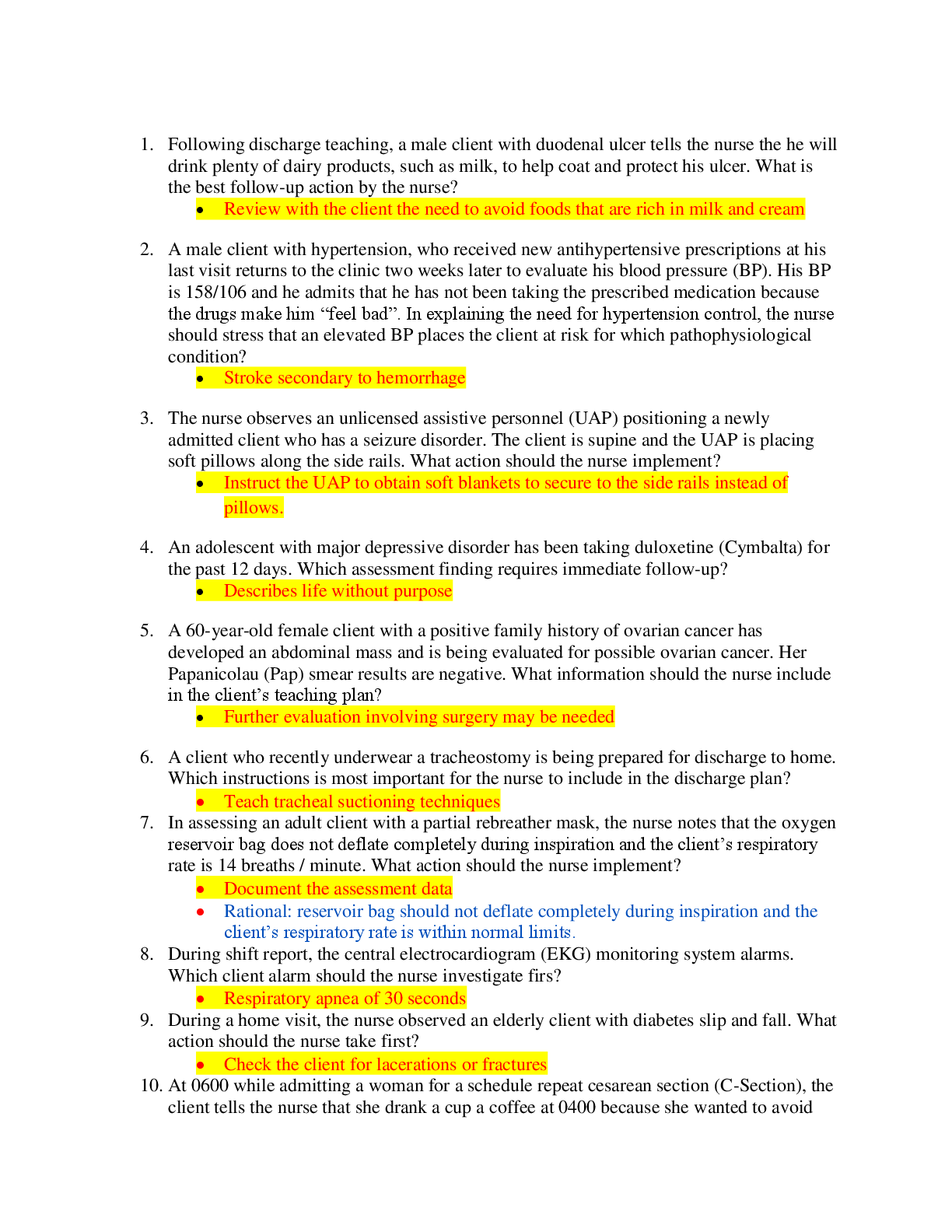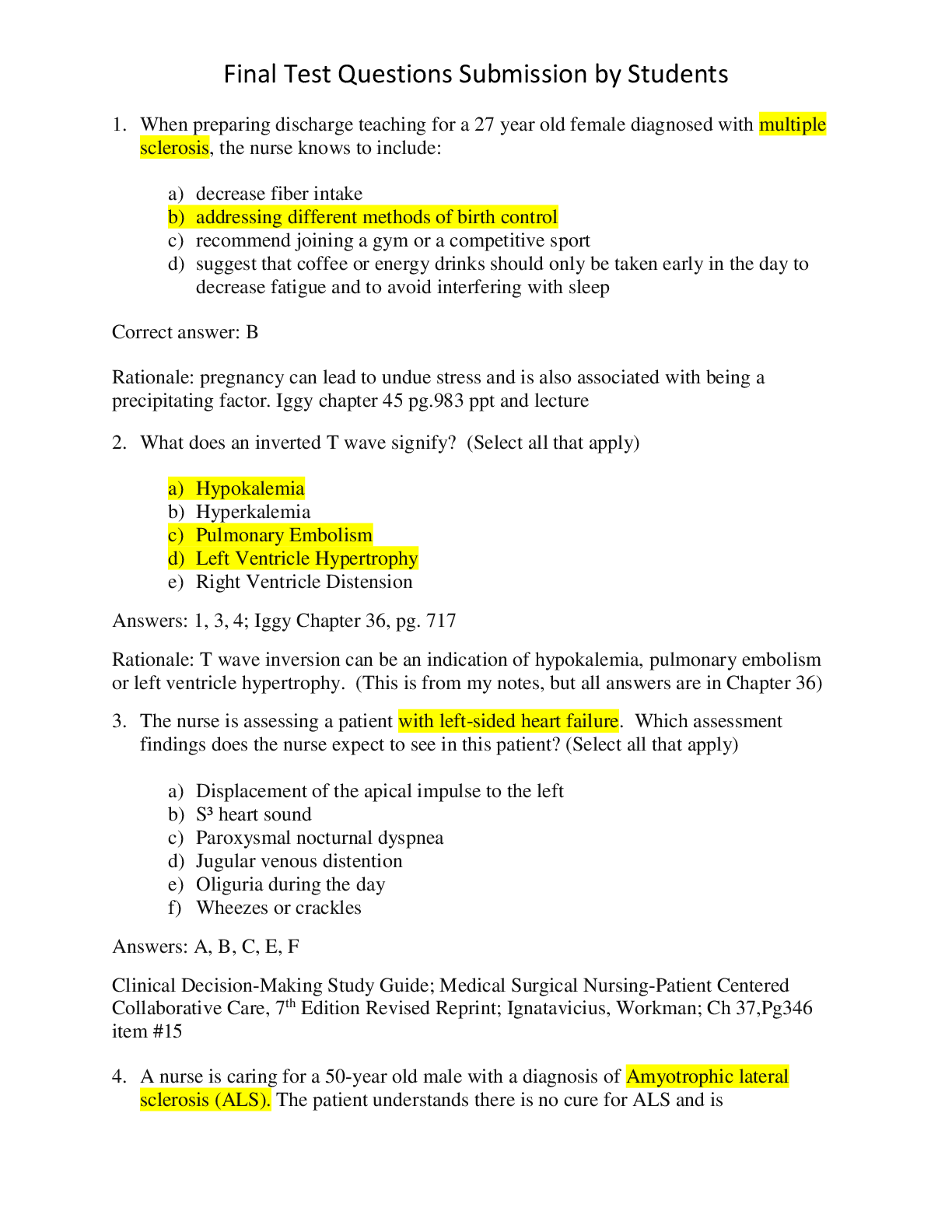*NURSING > ATI > ATI Mental Health Questions Final Exam and answers.13 pages of comprehensive work. Graded A+ (All)
ATI Mental Health Questions Final Exam and answers.13 pages of comprehensive work. Graded A+
Document Content and Description Below
A charge nurse is discussing mental status examination with a newly licensed nurse. Which of the following statements made by the newly licensed nurse indicates and understanding of the teaching? (Sel ... ect all that apply). A. "To assess cognitive ability, I should ask the client to count backwards by seven." B. "To assess affect, I should observe the client's facial expression." C. "To assess language ability, I should instruct the client to write a sentence." D. "To assess remote memory, I should have the client repeat a list of objects." E. "To assess the client's abstract thinking, I should ask the client to identify our most recent presidents." - A. "To assess cognitive ability, I should ask the client to count backwards by seven." B. "To assess affect, I should observe the client's facial expression." C. "To assess language ability, I should instruct the client to write a sentence." A nurse is planning care for a client who has a mental health disorder. Which of the following actions should the nurse include as a psychobiological intervention? A. Assist the client with systematic desensitization therapy. B. Teach the client appropriate coping mechanisms. C. Assess the client for comorbid health conditions. D. Monitor the client for adverse effects of medications. - D. Monitor the client for adverse effects of medications. A nurse in an outpatient mental health clinic is preparing to conduct an initial client interview. When conducting the interview, which of the following actions should the nurse identify as the priority? A. Coordinate holistic care with social services. B. Identify the client's perceptions of her mental health status. C. Include the client;s family in the interview. D. Teach the client about her current mental health disorder. - B. Identify the client's perceptions of her mental health status. A nurse is told during change-of-shift report that a client is stuporous. When assessing the client, which of the following findings should the nurse expect? - The client arouses briefly in response to a sternal rub. A nurse is planning a peer group discussion about the DSM-5. Which of the following information is appropriate to include in the discussion? (Select all that apply). A. The DSM-5 includes client education handouts for mental health disorders. B. The DSM-5 establishes diagnostic criteria for individual mental health disorders. C. The DSM-5 indicates recommended pharmacological treatment. D. The DSM-5 assists nurses in planning care for clients. E. The DSM-5 indicates expected assessment findings of mental health disorders. - B. The DSM-5 establishes diagnostic criteria for individual mental health disorders. C. The DSM-5 indicates recommended pharmacological treatment. D. The DSM-5 assists nurses in planning care for clients. E. The DSM-5 indicates expected assessment findings of mental health disorders. A nurse observes a client who has OCD repeatedly applying, removing, and then reapplying makeup. The nurse identifies that repetitive behavior in a client who has OCD is due to which of the underlying reasons? A. Narcissistic behavior. B. Fear of rejjection from staff C. Attempt to reduce anxiety. D. Adverse effect of antidepressant medication - C. Attempt to reduce anxiety. A nurse is caring for a client who is experiencing a panic attack. Which of the following actions should the nurse take? - Stay with the client and remain quiet. A nurse is assessing a client who has GAD. Which of the following findings should the nurse expect? (Select all that apply). A. Excessive worry for 6 months. B. Impulsive decision making. C. Delayed reflexes D. Restlessness E. Need for reassurance - A. Excessive worry for 6 months. D. Restlessness E. Need for reassurance A nurse is planning care for a client who has body dysmorphic disorder. Which of the following actions should the nurse plan to take first? A. Assessing the client's risk for self harm. B. Instilling hope for positive outcomes. C. Encouraging the client to participate in group therapy sessions. D. Encouraging the client to participate in treatment decisions. - A. Assessing the client's risk for self harm. [Show More]
Last updated: 2 years ago
Preview 1 out of 13 pages

Buy this document to get the full access instantly
Instant Download Access after purchase
Buy NowInstant download
We Accept:

Also available in bundle (1)
Click Below to Access Bundle(s)

ATI pharmacology, med surg, nutrition, fundamentals, mental health, teas; exams compilations. 102 different versions.
This bundle is a library of the aforementioned exam materials. The compilation contains questions with accurate answers. highly rated documents. download to score A+. 100% approved pass rate. deeply...
By bundleHub Solution guider 3 years ago
$55
143
Reviews( 0 )
$9.00
Can't find what you want? Try our AI powered Search
Document information
Connected school, study & course
About the document
Uploaded On
Feb 04, 2022
Number of pages
13
Written in
All
Seller

Reviews Received
Additional information
This document has been written for:
Uploaded
Feb 04, 2022
Downloads
0
Views
235


